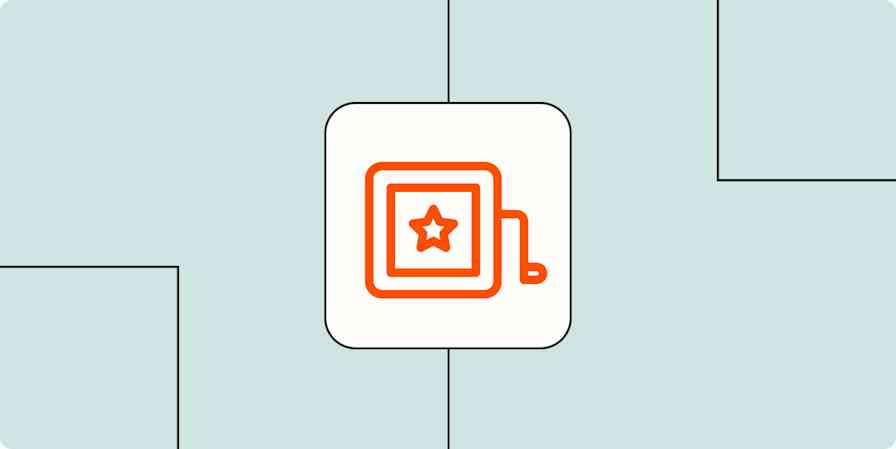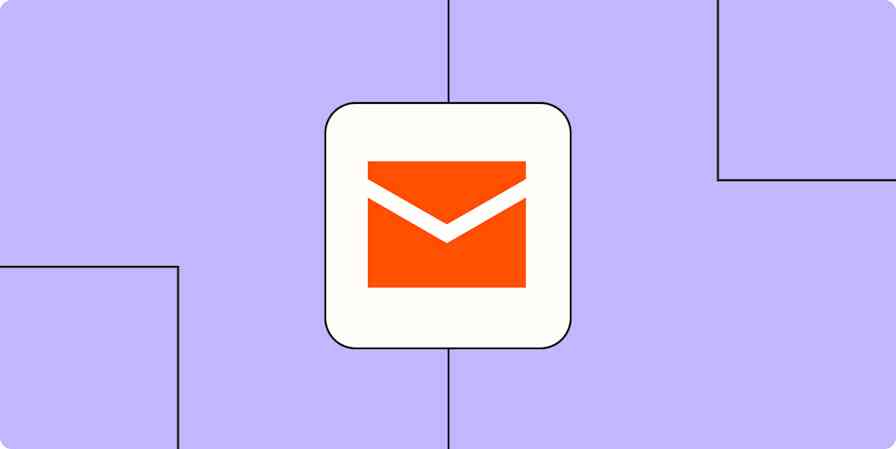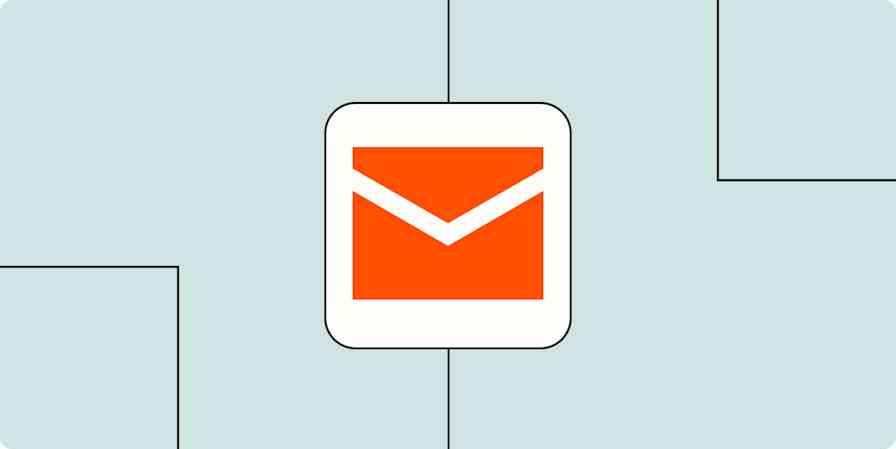First, clickbait was the goal…and you'll never guess what happened next!
Clickbait became bad. The clickbait mindset motivated people to create a lot of crappy content—because all that mattered was the click. We now recognize that the click is only one means to an end. The real end goal of content marketing is building a relationship with someone through high-value content that encourages them to become a loyal customer with a high lifetime value and perhaps even to take on the role as unofficial brand ambassador.
As any good relationship is a two-way street of giving, it may be time to make it easier for people to get your content. Besides, search engines, social media sites, and other tools continue to find more ways to prioritize the content that keeps users on their platforms (and to throttle content with external links). The best way to please those platforms and your leads and customers is through zero-click and no-click content.
What is zero-click and no-click content?
No-click and zero-click content are types of standalone content (usually at the top of the funnel) that provide your market with useful information, asking nothing in return. No "you have to read tip #7!" teasers. No 12-field form to fill out. Not even a click to the company's website. It means giving away some fantastic stuff—maybe some of your best—to people without forcing them to take any action. All they have to do is consume your content.
There's a bargain you make with consumers by offering zero- or no-click content. You provide them a low-friction experience to access some top-notch content. The hoped-for return is that they'll consume and share more of your content, helping you expand your brand recognition and reach. And ultimately, you might earn their trust and engagement over time.
So zero-click and no-click content are part of an authority-boosting, relationship-building strategy that involves some risk—but potentially high return.
Zero-click vs. no-click
Zero-click and no-click are often used interchangeably. To avoid confusion, here's how I separate the two terms. (Keep in mind my distinction is unofficial, but hopefully helpful, as there are two major subsets of this type of content):
Zero-click content is informational content found on search engine results pages; it provides the searcher with what they want without having to leave the search results page.
No-click content is high-value content published by a brand that requires no click to consume fully. It's often published on third-party sites, like social media.
In both cases, there are opportunities to click, but the audience doesn't need to click anything to get a complete dose of the content they're looking for.
Zero-click content: How it looks and why you want in on it
Zero-click search results exist on every search engine, but since Google has 90%+ market share, I'm sticking with it for explanations and examples. The principles remain the same across search engines even if some details differ.
The amount of content Google places above the organic search results has grown exponentially since it launched the knowledge graph in 2012.
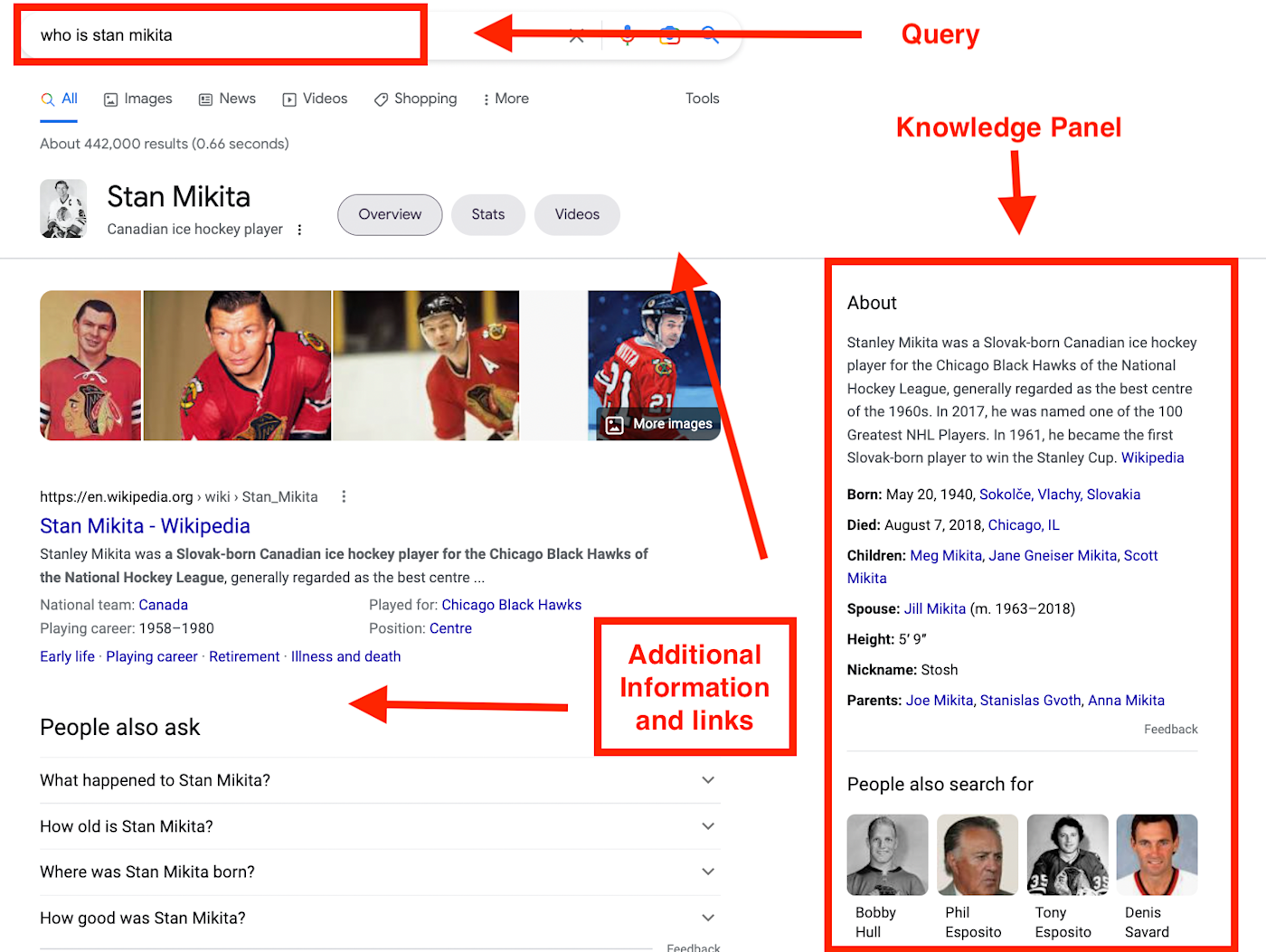
The original knowledge graph shared factual information in response to fact-seeking questions. Now it serves up a host of content in response to different query types that push organic results well out of view. There's been some discussion and disagreement about how many Google searches end without a click (hence, "zero-click"), but I'm not jumping into that debate; the data meisters can sort it out.
What we know—and have for a long time—is that search results after the first page rarely get clicked. Now there's so much content above the organic results, the searcher may not even get to the highest ranking result until at least two or three scrolls down the page. Under these circumstances, are there really any organic search results on the first page?
Zero-click content example 1
Other than the knowledge panel, the featured snippet is probably the most recognized type of zero-click content. You ask a question, and Google tells you the answer. Sometimes it'll even pop up before the ads.
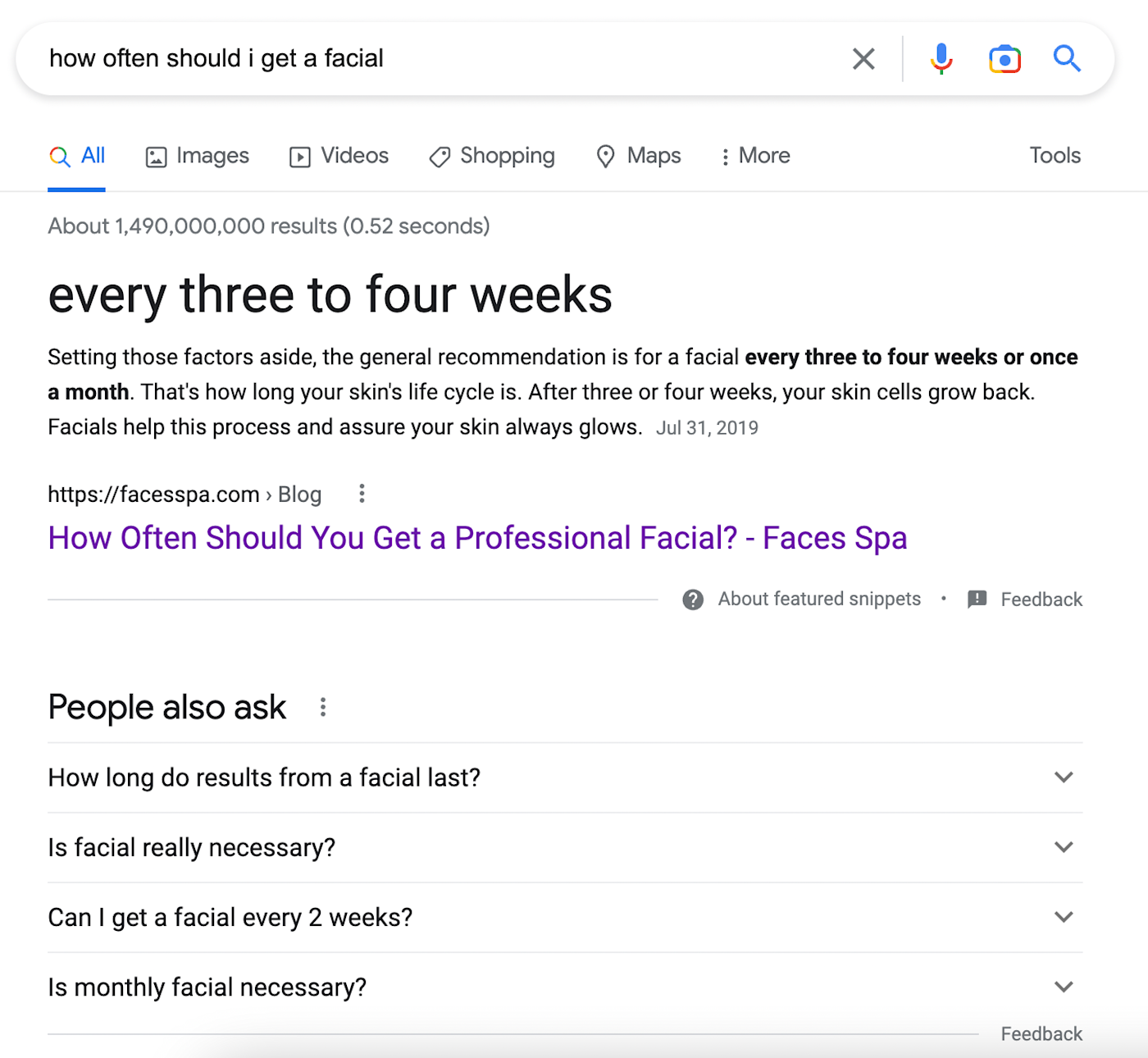
Zero-click content example 2
Another common type of zero-click content is the People also ask box. Here, Google puts related search queries and their answers, which come from external websites it trusts as high authority. Here's an example.
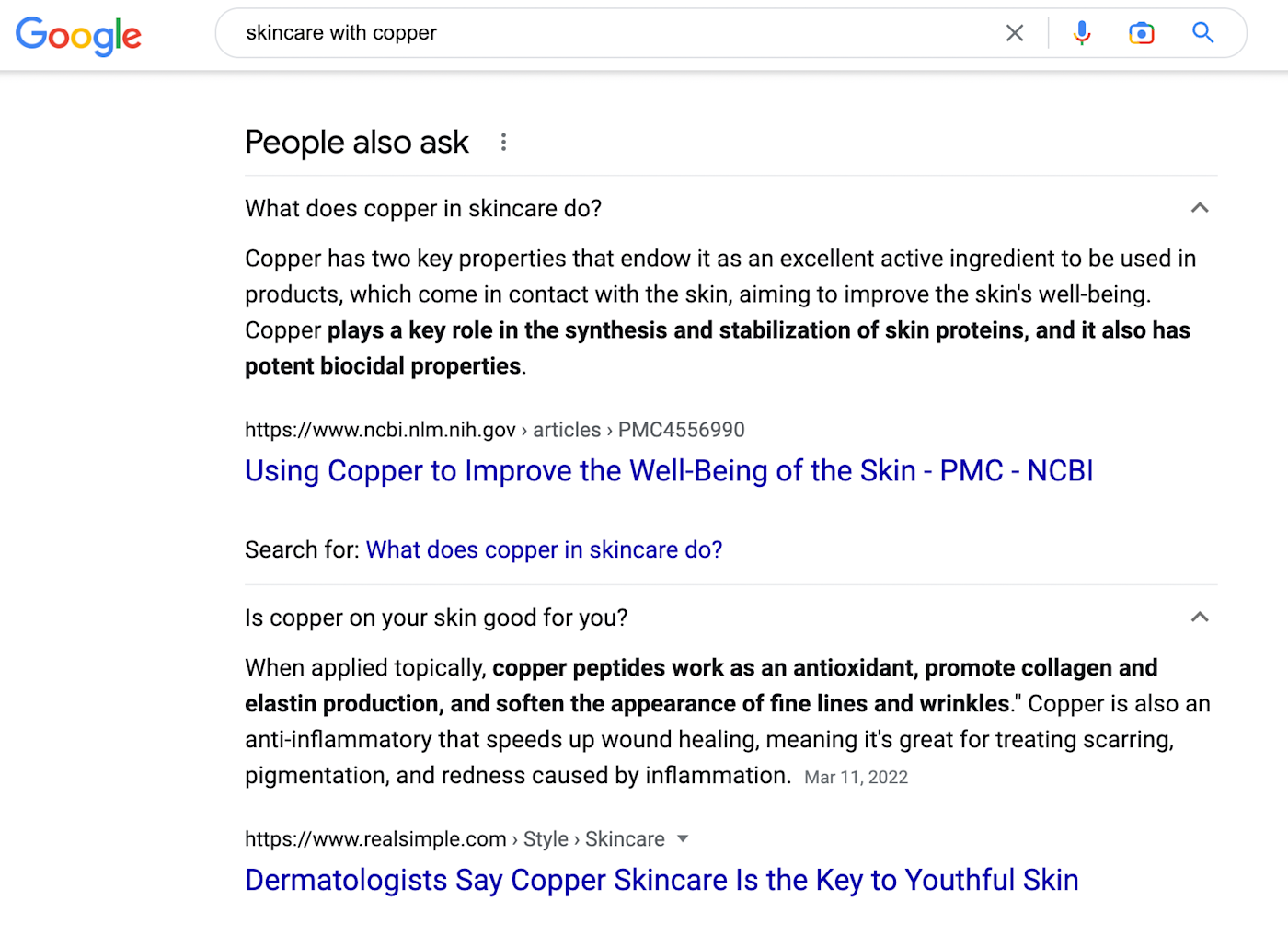
Zero-click content example 3
Let's look at a more in-depth example: the first three screens of a search for landing page builders.
First screen results before I scroll: it's all ads.
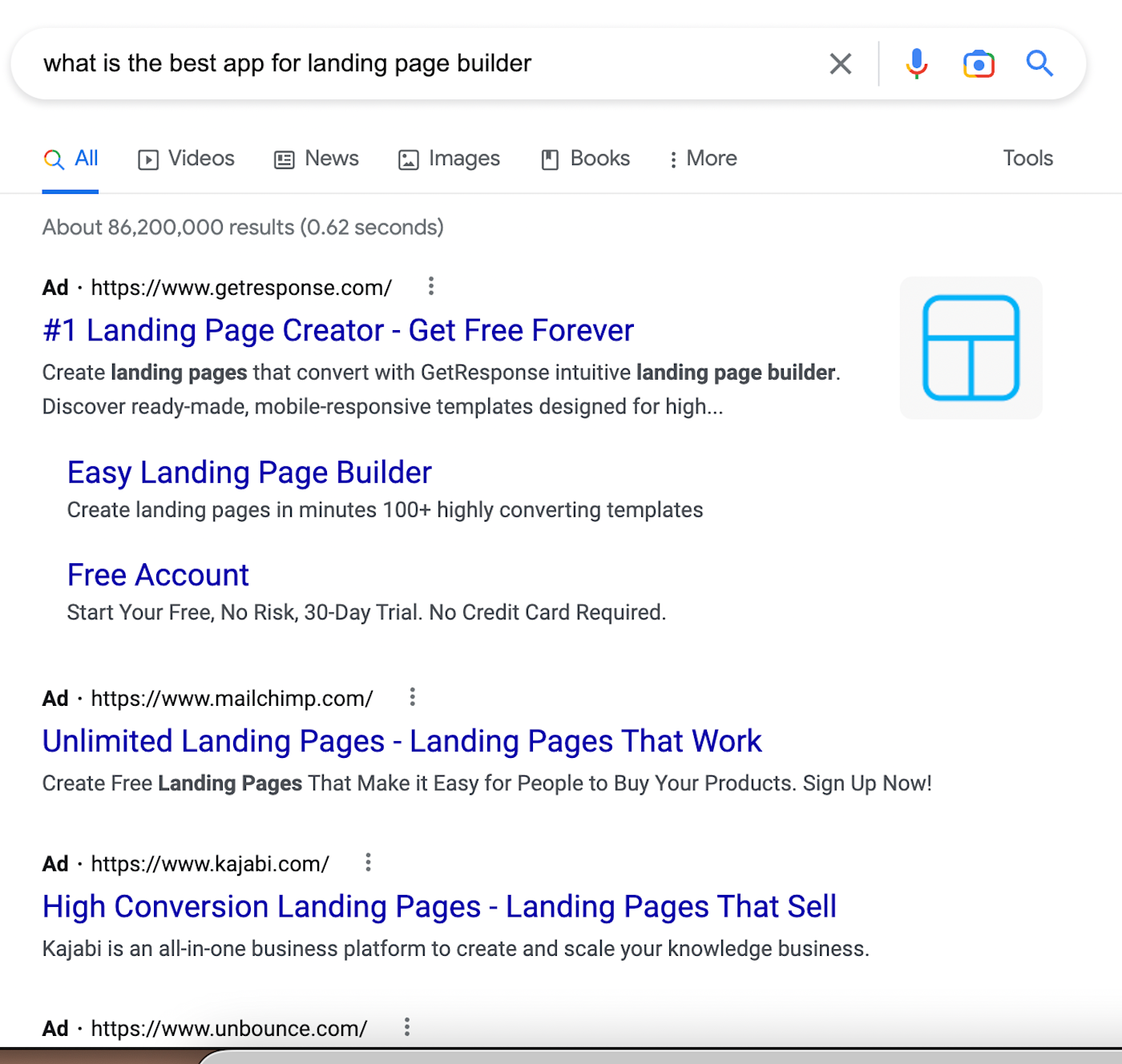
Scrolling down past the ads, we see a featured snippet and the People also ask box.
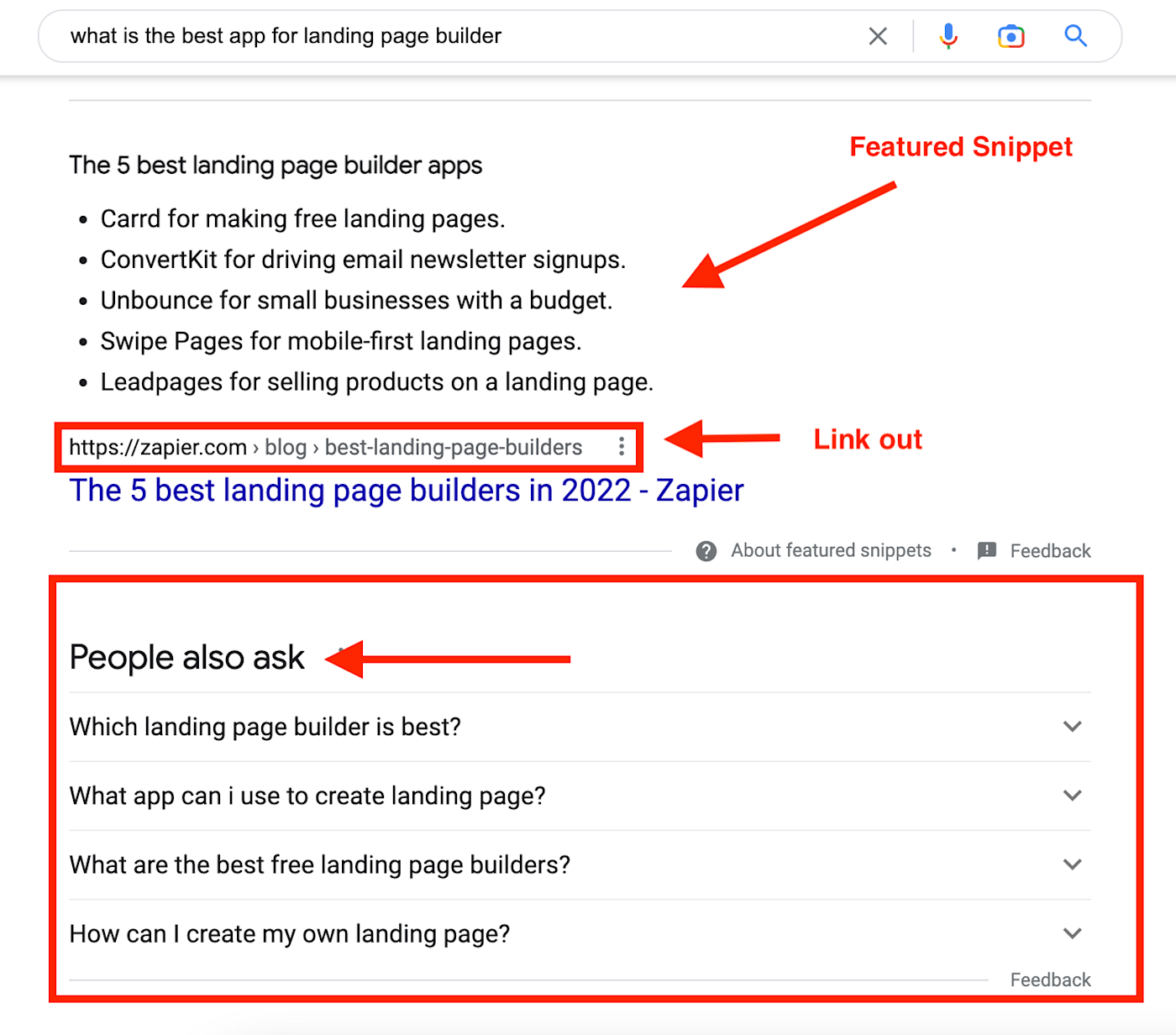
Common formats for featured snippets are bullet points or numbered lists (including step-by-step instructions for "how to" searches), which we see when clicking one option in the People also ask section.
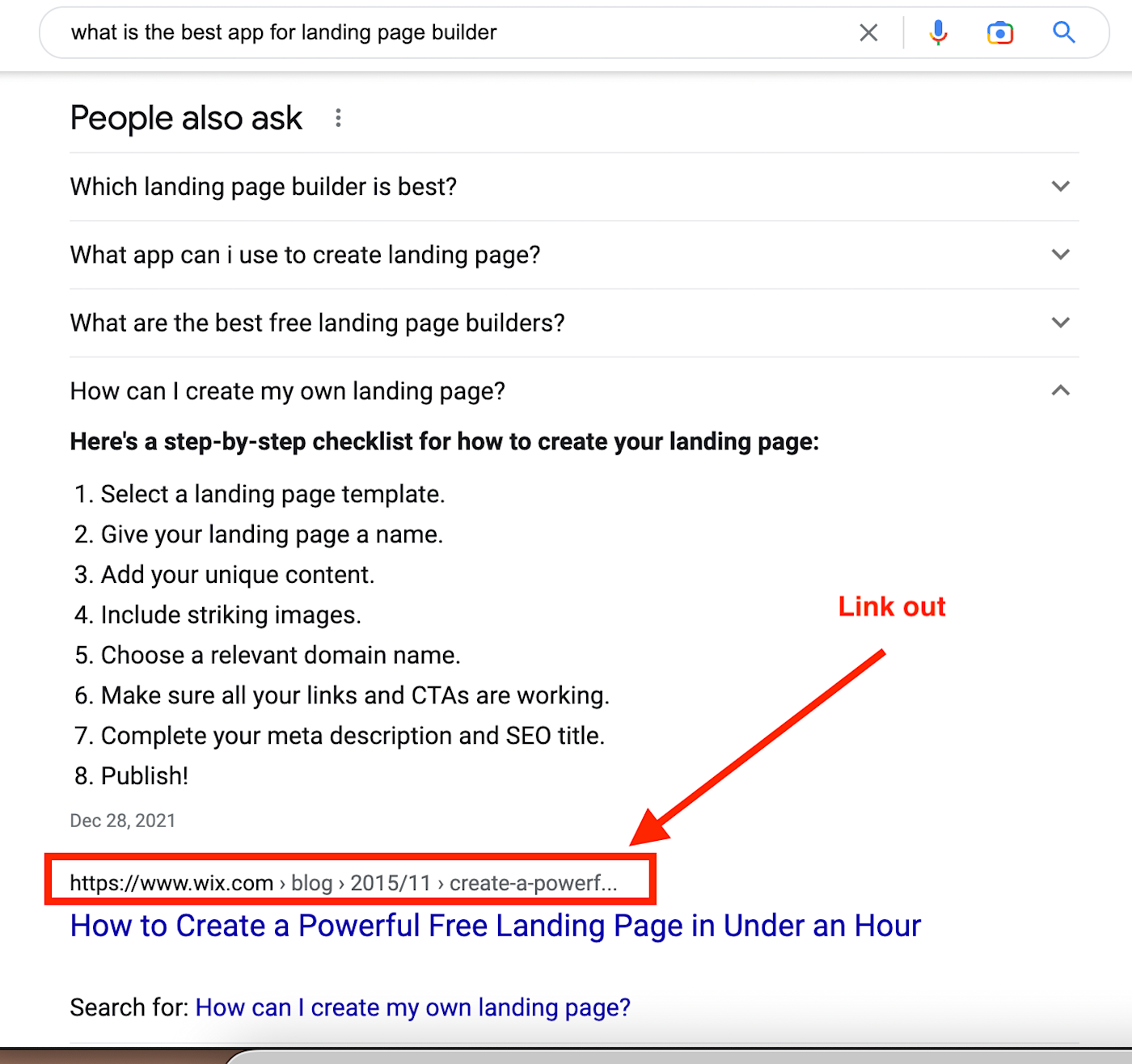
So far, we're two screens into the first page of the search results, with still no sight of an organic search result. After another scroll down, we finally see the first few organic search results. You may have noticed that Google often provides the links to the content source in the featured snippet and People also ask box. These are the first page organic results now.
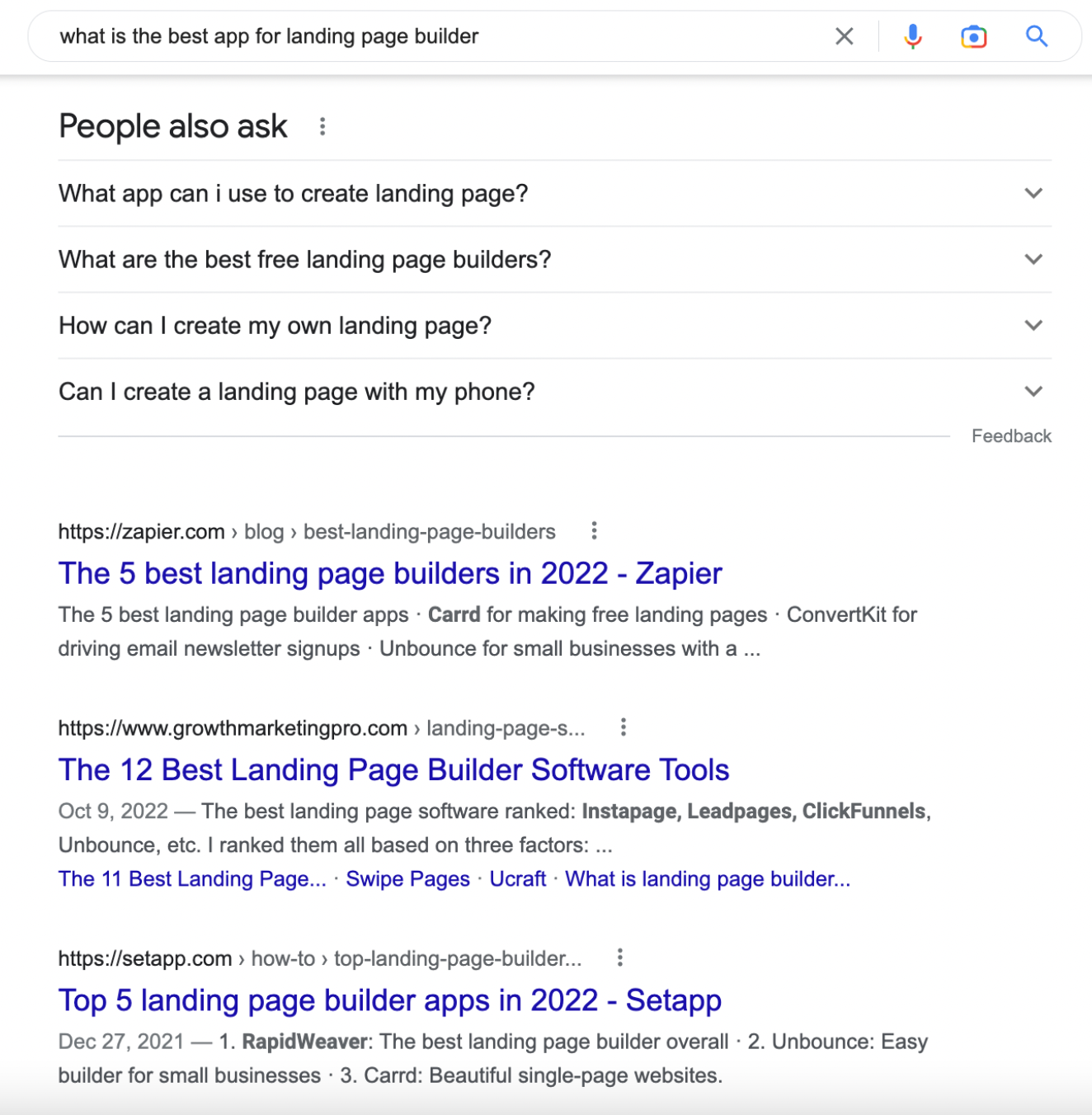
Zero-click content example 4
In some cases, Google curates information to share up top without providing a direct link to the source. Here's another example of how Google presents information—this one came right after the paid ads in response to a different app category search.
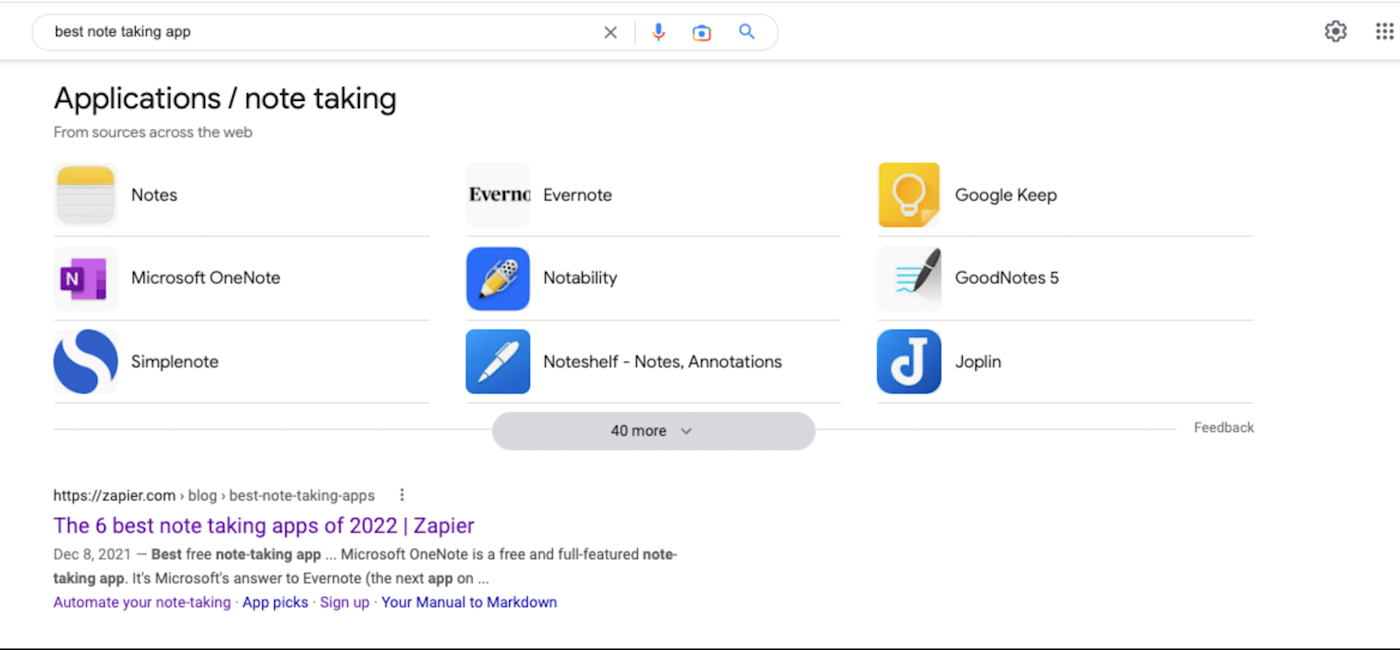
Like the People also ask section, clicking on any of these icons opens more featured snippet content. It offers outbound links to the searcher, but by this point, it's possible they've gotten what they came for.
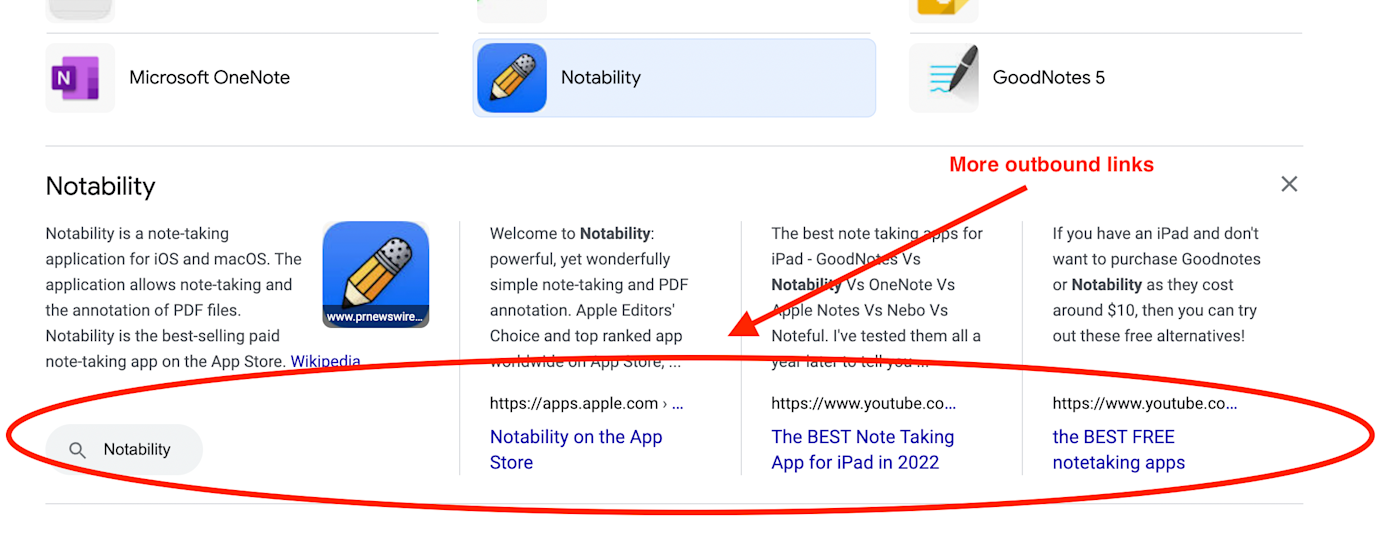
So is any of this really zero-click? Yes, because the search doesn't require the user to leave the results page to get valuable information. The searcher may want more information and click one of the external links. But even if they don't, the source website's name is always (eventually) clearly visible, so it's an opportunity to make another small deposit in the brand recognition account.
How to earn your spot in the zero-click space
You can't force your brand content into any zero-click space on Google. But what you can do is optimize your content so it's recognized by Google algorithms searching for high-value snippet content from high-authority sites to use.
Format your content in a way that Google will understand. If you're writing a how-to tutorial, make sure to use numbered lists, which are easy to identify as instructions. Same goes for things like definitions or brief explanations—start that sentence with "[Concept] is" or "[Word] means," so the robots can tell what follows.
Learn from existing featured content. Look at the content that Google is publishing as zero-click to see what it likes.
Use structured data. Structured data helps Google understand more about your content and ways to present it in zero-click content.
As for the substance of your zero-click content, approach it like any other SEO strategy. It starts with finding the right keywords and gets a bit more complicated from there.
No-click content: Where and what to publish
Unlike zero-click content, no-click content offers complete control over what to publish and where it gets published.
What to publish: The content topic selection process is the same as for any other content type. Any topic you're building content around is a topic you can use as no-click content. Focus on the customer's needs and questions, not product or service promotion. Develop genuinely useful (or at least relevant and interesting) topics that leave the consumer feeling like consuming your content was time well spent and happy that it cost them nothing to partake.
Where to publish. The most common place you'll see no-click content is on social media platforms. Some popular apps, like TikTok and Instagram, won't even let you include an external link in your post. Others will let you add the link, but they'll often limit the post's visibility. In either case, no-click content is a great option. You might also see no-click content on media sites—think thought leadership in an online publication.
No-click content example 1
Writing no-click content doesn't mean you ask nothing of your audience; it means you aren't requiring them to take any action to get value from your content. Here's a LinkedIn post that provides a complete bit of actionable, useful information.
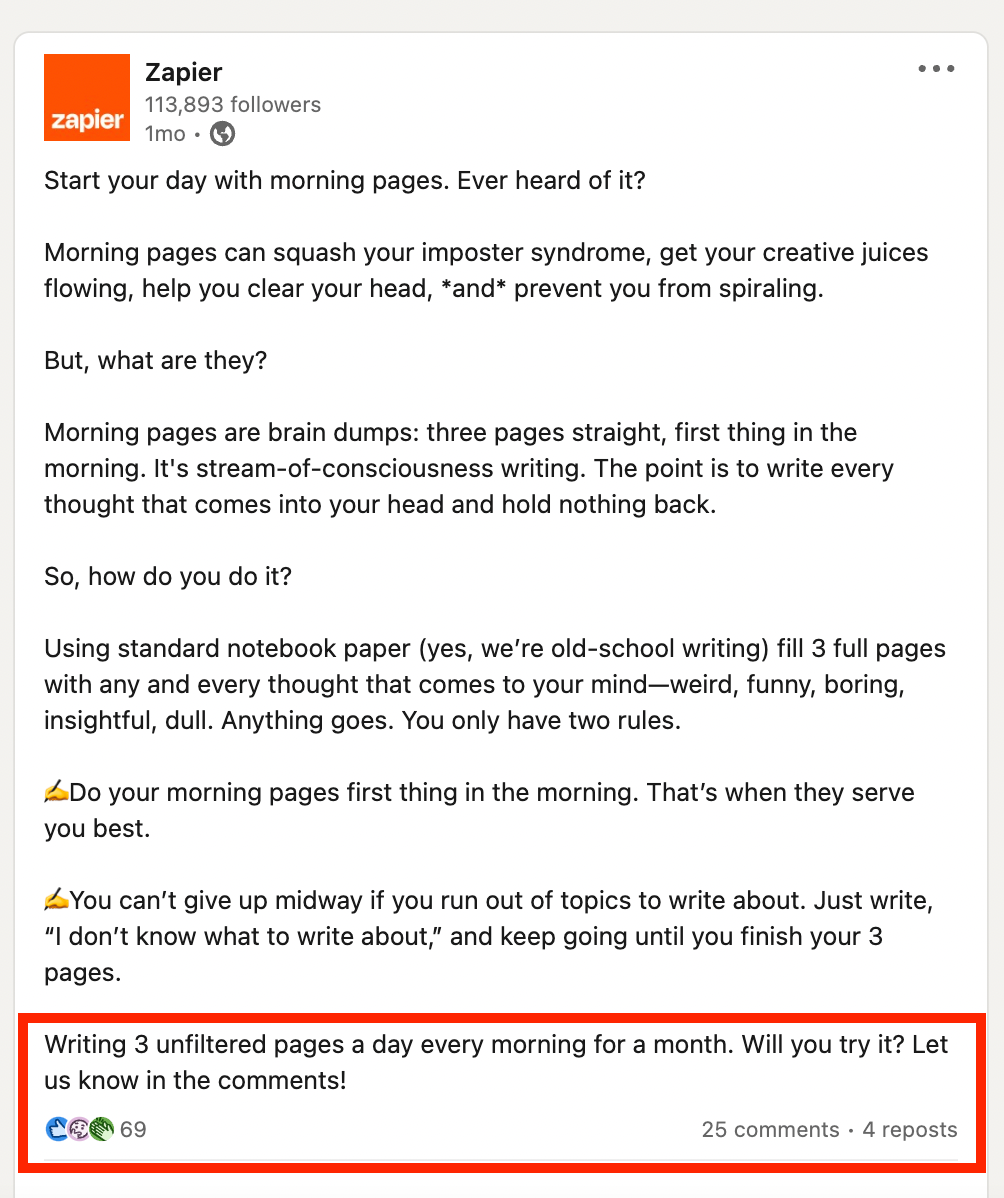
Zapier does ask for reader engagement at the end of the post, but no reader has to provide it; the content is a complete experience for them as is. But they can…
This is also a good example of no-click content substance. It addresses a specific, common issue in a short, easy-to-consume, practical way. This format is micro-content, which is a great option for no-click content because you can produce it consistently at high quality. Content volume matters in a no-click strategy since the goal is to increase brand awareness opportunities, and it's harder to track impact.
No-click content example 2
In this example, Renée Rouleau Skin Care shares a short video with actionable skin care tips. The no-click content, which is valuable on its own, ends with a strong call-to-action without sharing an external hyperlink.
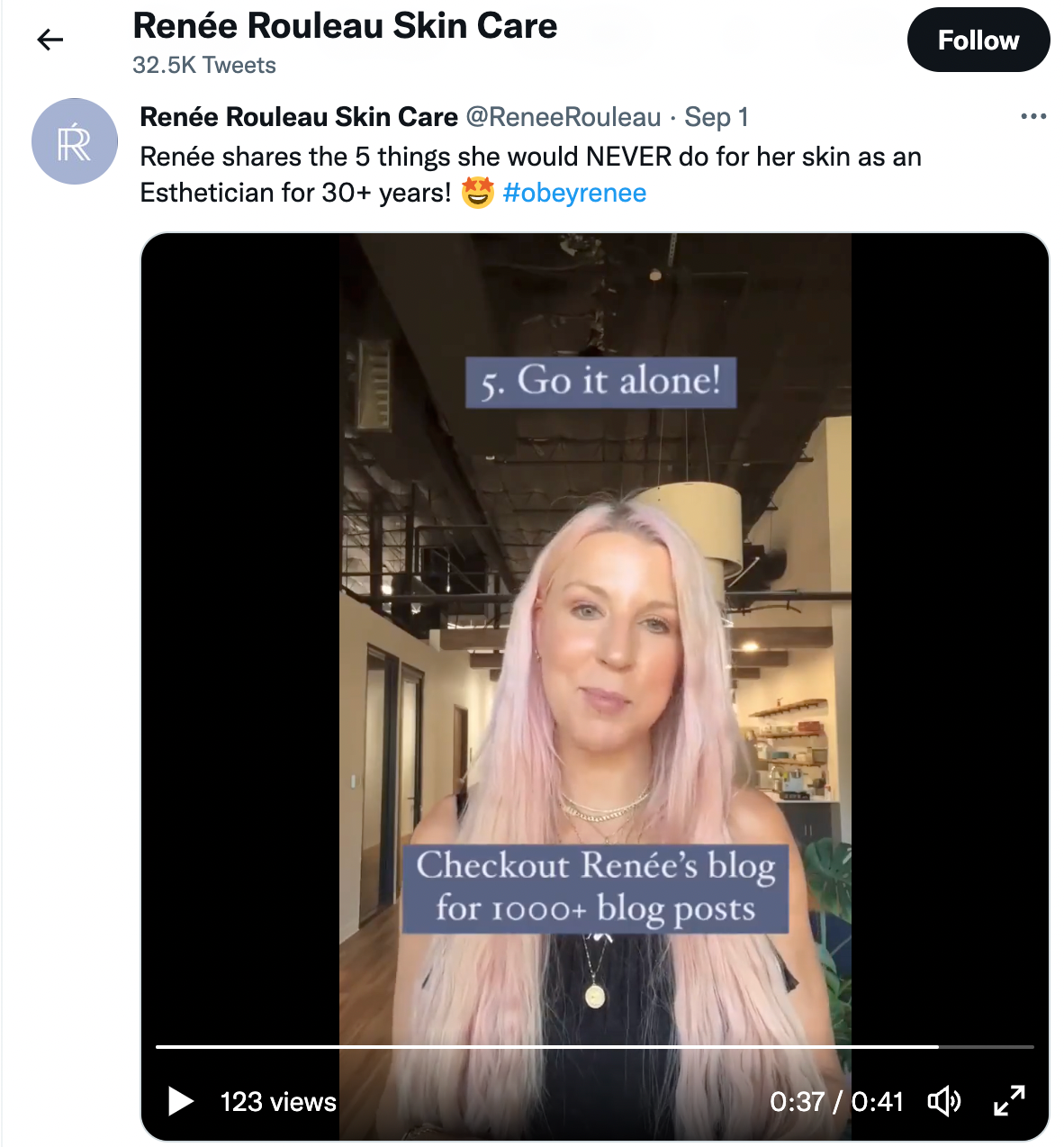
The only hyperlink is to a hashtag that keeps the user on Twitter, which the platform likes, but it immerses the user in Renée Rouleau branded content within that site.
The payoff from zero- and no-click content
People understand the tech cliché that if they're not paying for the product, they are the product. Getting something valuable without having to give anything in return is a novel and welcome experience your brand can offer prospects.
But you also win: by carving out space for your brand content in a world where search engines and third-party platforms work hard to keep users from leaving their site. In that space, your zero- and no-click content can increase awareness, earn goodwill, and build authority and credibility for your brand. Yes, it's harder to measure the impact of zero- and no-click content, but it lays the foundation for future engagement with other brand content and staying top of mind when users move out of casual exploration to the buying discovery phase.
Zapier is the leader in workflow automation—integrating with thousands of apps from partners like Google, Salesforce, and Microsoft. Use interfaces, data tables, and logic to build secure, automated systems for your business-critical workflows across your organization's technology stack. Learn more.

